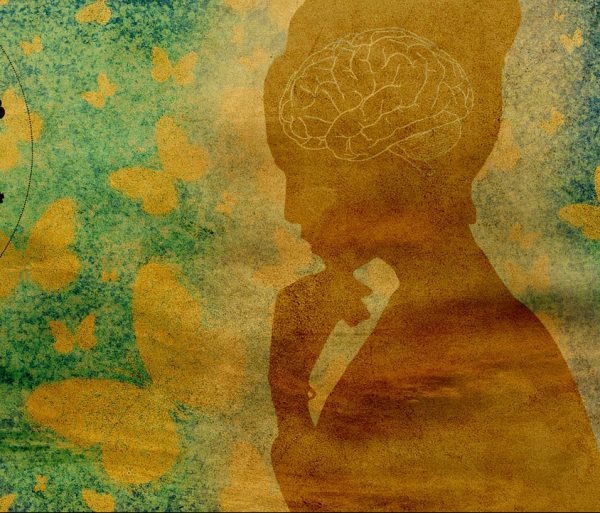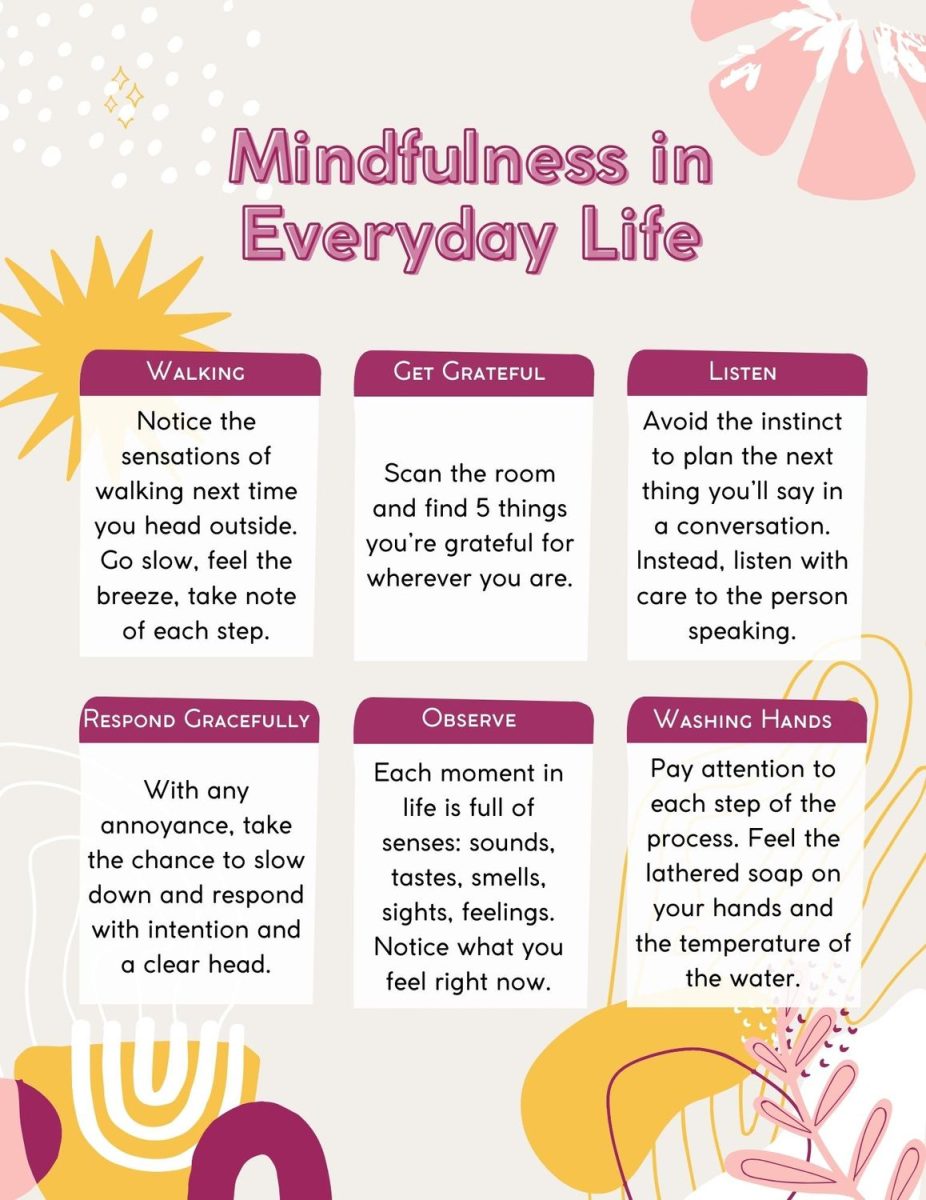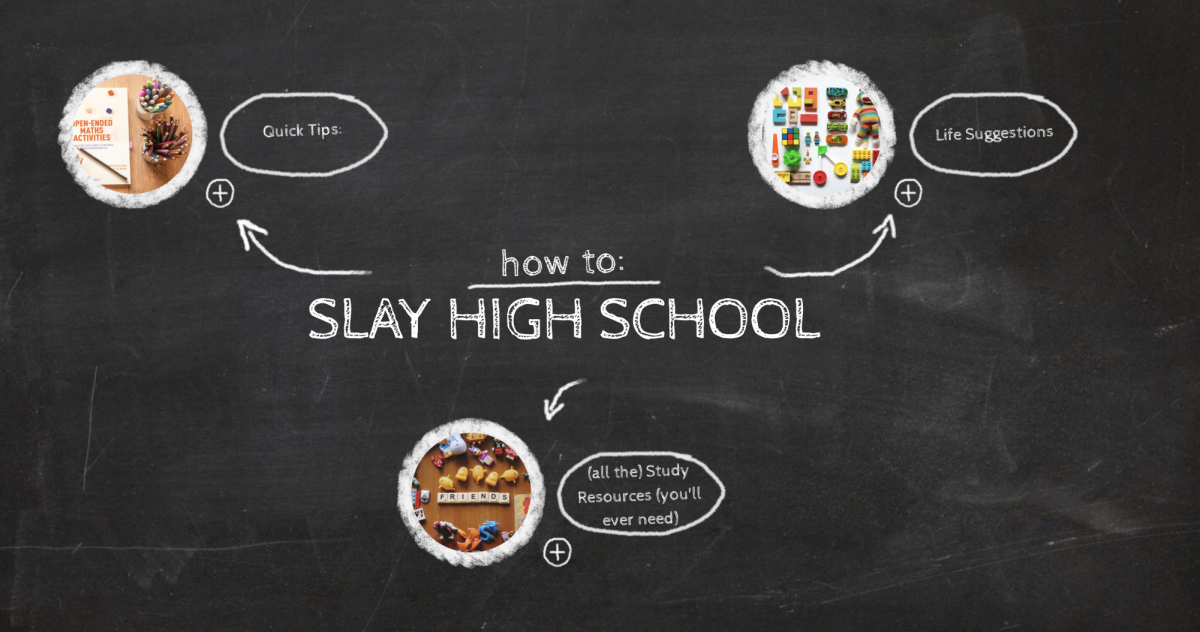As much as we like to think we have everything under control at all times, high school is a place where people’s stress thresholds begin to break. And that’s when the control starts to crumble, and sometimes we feel lost in space, with no end in sight of all the assignments, homework, sports practice, jobs… the list goes on. As insignificant as it might seem, practicing methods of mindfulness and meditation is actually a proven way to not only help yourself in a stressful situation, but also change your perspective of others and even how to give them support.
Mindful Breathing
An obvious and perhaps cheesy one, I know, but calm or diaphragmatic breathing can slow your breath and systematically reduce anxiety. It may not solve all your stress, but taking a second away from an overly stimulating situation will cause your heart rate and blood pressure to be reduced. Focusing on your body and breathing triggers a decrease in the production of stress hormones in your body, and any other panic responses to calm down as well (CollegeVine). The great thing about mindful breathing is that it can be done pretty much anywhere; at your desk, during lunch, in the hallway (especially when you’re frustrated by the immobile masses of people), or lying in bed before starting your day or as you are going to sleep. By practicing this exercise for as little as three minutes three to four times a day, or whenever you are feeling overwhelmed, your sense of calm will increase, and stress-inducing situations just might become a little easier to bear.
- The 4-7-8 method: breathe through your nose for 4 seconds; hold your breath for 7 seconds; forcefully exhale for 8 seconds; repeat for 3-5 minutes
- The Box Method: breathe in, counting to four slowly; hold your breath for four seconds and try to avoid inhaling or exhaling; slowly exhale through your mouth for four seconds; repeat the first three steps until you feel re-centered
- Rib-stretch breathing: stand or sit upright, cross your arms over your chest, and place your palms on either side of your rib cage; breathe in through your nose, feeling your ribs expand into your hands; hold your breath for five to ten seconds; breathe out slowly through your mouth

Body Scan Meditation
If you’ve ever found yourself having mounds of tension in a specific area of your body, like your shoulders, hands, or back muscles, this may be helpful to relieve the physical manifestations of stress within your body. This isn’t quite as easy to do during the school day, but it’s a great way to end a workout, before going to bed at night, or really any time you have the chance and feel the need to get rid of some tension. The body scan is a grounding meditation that helps you focus on your awareness of each part of your body from the tips of your toes to the top of your head. You can do this yourself, or it may be helpful to use a guided meditation podcast or app. My favorite way to practice this exercise is by tightening each muscle separately as hard as I can, then releasing ever so slowly, to really feel the relaxation happening in each part of my body.
Journaling
As cliché as it may be, simply the act of getting your thoughts on paper can be so helpful in either clearing your mind for a fresh start to the day, or as a method of processing difficult events or feelings. I have found that just by putting pen to paper, I come up with solutions to problems or realize things about myself that I didn’t even know were there. This is an expressive writing protocol developed by Dr. James Pennebaker is the most widely used and researched method utilized in clinical practice (Whole Health Library). It provides a safe space that only you will see to unload your pent-up thoughts and feelings that may be overwhelming your brain. And, not only does journaling do wonders for your mental health, but it also has been shown to improve memory and even boost immunity.
Rapid Fire:
- Coloring or drawing – Whether you like filling in the lines of a coloring book or drawing freehand from your imagination, coloring can be a way to escape from the intensity of everyday life and provide a break from school and social stressors. Coloring something with simple or repetitive elements like a mandala can also be a great relief from decision fatigue.
- Get outside – Seriously. Get some sunlight. You’ll thank me later.
- Listen to music mindfully – We’ve all put headphones on to drown out the noise of a buzzing classroom, but how often do you really put all your energy into listening to that song? Do you really hear and take note of the words? By not allowing your attention to wander while listening to your favorite songs, or even one you’ve never heard before, you are simultaneously preventing your brain from conjuring up any negative or stressful energy.




